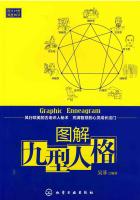唐惠润
内容摘要:《修墙》是美国诗人罗伯特·弗罗斯特最著名的诗篇之一。在诗中,弗罗斯特讲述了新英格兰农民在每年春天都要修墙的传统,反映了人们自我隔离的一种心态,提出了对谚语“高墙出睦邻”的质疑,体现了诗人对传统以及人们对待传统的态度的一种反思,讽刺了那些顽固守旧、盲目遵循旧传统的人。本文将以韩礼德的系统功能语法以及马丁的评价系统作为分析框架,从概念意义、人际意义、语篇意义三个角度对这一诗篇进行细致分析,探索系统功能语言学在诗歌研究中的应用性。
关键词:《修墙》、功能语法、概念意义、人际意义、语篇意义
一、引言
在《功能语法导论》一书的序言部分,韩礼德(2000)提到这本书是为进行语篇分析和语法研究的人而写。的确,他的系统功能语法,再加上马丁在研究人际意义方面的新发展评价系统,为语篇分析提供了非常实用的理论框架。众多学者将这一理论框架用于分析小说、散文、新闻等各类语篇。然而,将系统功能语法和评价理论用于诗歌的分析还是比较少见。本文将尝试用这一理论对美国诗人罗伯特·弗罗斯特的《修墙》一诗进行功能分析,以探索这一理论框架在诗歌语言研究中的应用性。
《修墙》是罗伯特·弗罗斯特最著名的诗篇之一,1914年发表在《波斯顿北》合集上,是一首规则的五音步诗。诗中讲述了新英格兰农民每年春天修墙的传统,描述了一个顽固保守的邻居,坚持“高墙出睦邻”的观念。诗人提出质疑“为何高墙出睦邻”来对传统进行挑战,同时指出一味遵循传统的盲目性。诗中还涉及了现代社会人们自我封闭、相互交流困难的主题(黄宗英,2000:107)。
在《功能语法导论》中,韩礼德(2000)明确提出了语言的三大元功能:概念功能、人际功能和语篇功能,每一个功能都是通过一个复杂的系统,通过各种语言手段实现的。概念功能指的是承载意义的功能,即意义潜势,通过及物系统实现;人际功能研究的是语言如何表现社会和人际关系,主要通过语气和情态系统表现出来;语篇功能则研究的是句子如何连接成连贯统一的语篇,而不同于一系列随意排列的句子,这一功能主要通过主题系统和衔接系统实现。
在人际功能的研究上,马丁(2005)提出语气和情态系统不足以充分表达说话人的立场、观点和态度,还存在多种词汇手段来帮助实现语言的人际功能。因此他建立了一个评价系统,包括态度、介入和等级等子系统,来描述和解释语言是如何用来评价、表明立场、构建语篇人物形象和人际关系的。接下来本文将从三大元功能角度分别分析《修墙》一诗。
二、概念功能分析
概念功能是通过及物系统实现的,及物系统包含以下六个过程:(1)物质过程,即行事行为过程;(2)心理过程,即心理活动,包括感知、反应和认知过程;(3)关系过程,即存在过程及反映两个事物之间关系的过程;(4)行为过程,即身体和心理行为;(5)话语过程,即说话的过程;(6)存在过程,即存在和发生的过程(胡壮麟、朱永生、张德禄,1989)。
《修墙》可以分为四个部分:第一部分描述墙上出现缺口;第二部分描述修墙过程;第三部分是叙述者对墙本身、修墙工作和邻居相关反应的评价;最后一部分是叙述者试图改变邻居的看法但是却没有成功,反映了邻居的顽固保守。读完整首诗,我们可以发现及物过程的使用并不是随意的,诗人选用的每一个及物过程都体现了一定的概念功能。
Mending Wall
Something there is that doesn’t love a wall,
That sends the frozen-ground-swell under it
And spills the upper boulders in the sun,
And makes gaps even two can pass abreast.
The work of hunters is another thing:
I have come after them and made repair
Where they have left not one stone on a stone,
But they would have the rabbit out of hiding,
To please the yelping dogs.The gaps I mean,
No one has seen them made or heard them made,
But at spring mending-time we find them there.
——《修墙》第一部分,罗伯特·弗罗斯特(李宜燮、常耀信,1991)
第一部分是整首诗的引入部分,以一个存在过程开头“Something there is that doesn’t love a wall”,“something”即是一个存在,作为一个不定代词,它给读者一定的悬念,吸引读者去思考究竟是何人不喜欢墙。接着的一系列物质过程“sends frozen-ground-swell”,“spills the upper boulders”,“makes gaps”,“have made repair”,“have left not one stone on a stone”描述了这面墙究竟发生了什么。两个关系过程“The work of hunters is another thing”,“the gaps I mean...”和两个心理过程“No one has seen them made or heard them made,/But at spring mending-time we find them there”更增加了墙上缺口的神秘性,引起读者的好奇心,吸引读者继续阅读。
I let my neighbor know beyond the hill;
And on a day we meet to walk the line
And set the wall between us once again.
We keep the wall between us as we go.
To each the boulders that have fallen to each.
And some are loaves and some so nearly balls
We have to use a spell to make them balance:
“Stay where you are until our backs are turned!”
We wear our fingers rough with handling them.
——《修墙》第二部分,罗伯特·弗罗斯特(李、常,1991)
诗的第二部分以一个话语过程开头,叙述者告知他的邻居墙上有了缺口,接着一系列物质过程描述了修墙的过程,关系过程“And some are loaves and some so nearly balls”强调了修墙的石头很重,再加上两个物质过程“We have to use a spell to make them balance:/‘Stay where you are until our backs are turned!’”体现了工作的不易。
Oh,just another kind of outdoor game,
One on a side.It comes to little more:
There where it is we do not need the wall:
He is all pine and I am apple orchard.
My apple trees will never get across
And eat the cones under his pines,I tell him.
He only says,“Good fences make good neighbors.”
——《修墙》第三部分,罗伯特·弗罗斯特(李、常,1991)
第三部分讲述了叙述者对修墙一事的看法,以及与邻居进行交流的过程,然而邻居只是简单地回答“高墙出睦邻”。两个关系过程“Oh,just another kind of outdoor game/One on a side.It comes to little more.”体现了作者的态度,两个话语过程“I tell him”和“He only says”体现了他和邻居的沟通情况。
这里有意思的是叙述者对其邻居所说的不需要墙的原因:“He is all pine and I am apple orchard My apple trees will never get across/And eat the cones under his pines I tell him”。这里有两个关系过程“He is all pine and I am apple orchard”,显然“He”作主语,“pine”、“apple orchard”在系动词后作表语是不符合逻辑的,但是读者完全能够理解句子的意思。一方面,后文有两个物主代词“my”和“his”明确了“他”和“松树”以及“我”和“果园”的关系,所以读者不至于误解;另一方面,这种拟人的修辞法虽然不合逻辑,却隐含了修墙这件事情的荒谬性,也体现了作者对这件事情的态度。
Spring is the mischief in me,and I wonder
If I could put a notion in his head:
“Why do they make good neighbors?Isn’t it
Where there are cows?But here there are no cows.
Before I built a wall I’d ask to know
What I was walling in or walling out,
And to whom I was like to give offense.
Something there is that doesn’t love a wall,
That wants it down.”I could say“Elves”to him,
But it’s not elves exactly,and I’d rather
He said it for himself.I see him there,
Bringing a stone grasped firmly by the top
In each hand,like an old-stone savage armed.
He moves in darkness as it seems to me,
Not of woods only and the shade of trees.
He will not go behind his father’s saying,
And he likes having thought of it so well
He says again,“Good fences make good neighbors.”
——《修墙》第四部分,罗伯特弗·罗斯特(李、常,1991)
最后一部分,叙述者对邻居的“高墙出睦邻”的理论提出质疑,并且试图把这种质疑传统的精神传达给他的邻居,但是没有成功。他的质疑是以一个心理过程“I wonder”开始的,后面接的是一系列话语过程“Why do they make good neighbors?Isn’t it/Where there are cows?But here there are no cows./Before I built a wall I’d ask to know/What I was walling in or walling out,/And to whom I was like to give offense./Something there is that doesn’t love a wall,/That wants it down....”。作者尝试用提问的方式激起邻居的反思。心理过程“I see him there”和“as it seems to me”描述的是叙述者对邻居回应的理解。之后他用了一个否定的物质过程“he will not go behind his father’s saying”和一个心理过程“He likes having thought of it well”刻画出了他的顽固,最后一个重复的话语过程“He says again,‘Good fences make good neighbors’”更强调了这位邻居的因循守旧和难以沟通。














